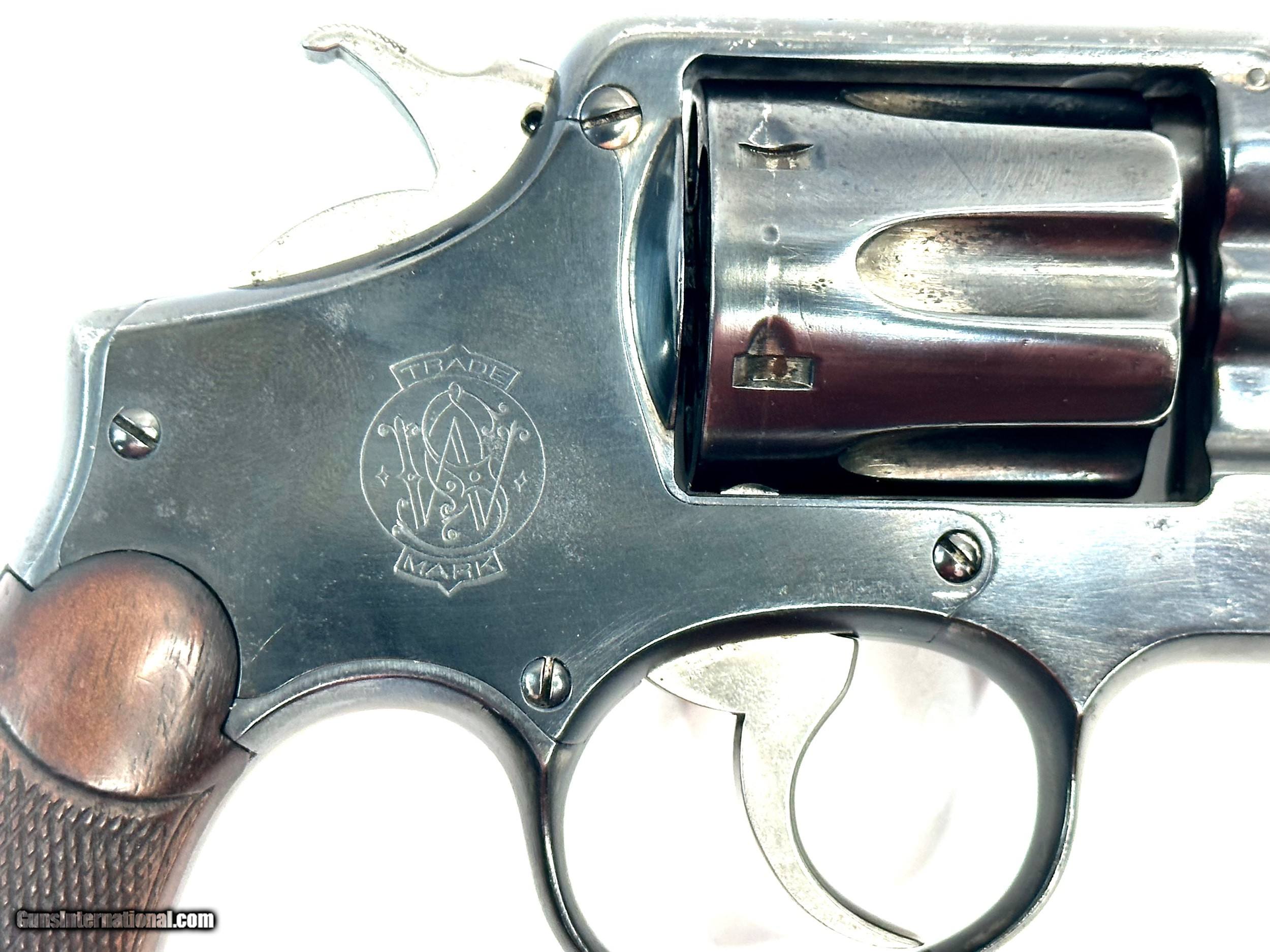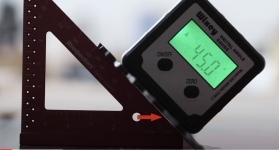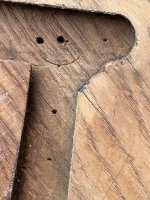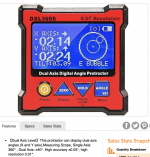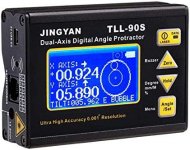Michael Kellough
Member
The protractor smorgasbord posted is merely a “universal protractor”. The hdv post is a “universal precision protractor”. The vernier scale on the precision model has three times as many divisions. You have to look very closely to find the closest match.
The lower precision model is easier to use because it has longer arms to which to set your (well made) sliding bevel. To use the more precise model you fit a small precision sliding bevel into the open angle on the right.
Then you would sit the sliding bevel on the saw table and adjust the blade to fit the bevel. But if your table has a blade access cover you should assume that surface is not a close enough representation of the table plane to sit the small bevel on so you need to transfer the small bevel angle to a larger (well made) sliding bevel that will sit on the actual table rather than the flimsy insert.
Make a cut and test the resulting bevel. With the test workpiece sitting on a flat surface slide the small precision bevel to it and if there is any light passing between the blade and the wood find the feeler gauge that fits the gap. Then adjust the second sliding bevel to the small one with the feeler gauge in place. You have to move the feeler gauge to the opposite end of the small bevel arm to change the angle of the larger gauge.
The lower precision model is easier to use because it has longer arms to which to set your (well made) sliding bevel. To use the more precise model you fit a small precision sliding bevel into the open angle on the right.
Then you would sit the sliding bevel on the saw table and adjust the blade to fit the bevel. But if your table has a blade access cover you should assume that surface is not a close enough representation of the table plane to sit the small bevel on so you need to transfer the small bevel angle to a larger (well made) sliding bevel that will sit on the actual table rather than the flimsy insert.
Make a cut and test the resulting bevel. With the test workpiece sitting on a flat surface slide the small precision bevel to it and if there is any light passing between the blade and the wood find the feeler gauge that fits the gap. Then adjust the second sliding bevel to the small one with the feeler gauge in place. You have to move the feeler gauge to the opposite end of the small bevel arm to change the angle of the larger gauge.

